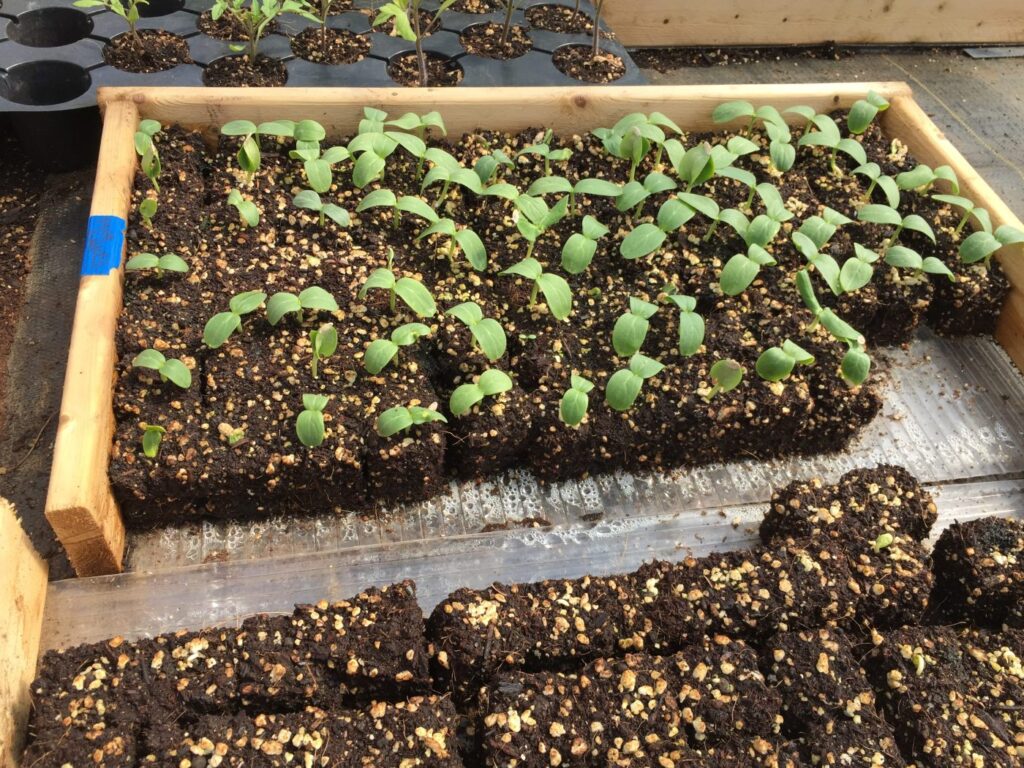Garden Q&A: Are my leftover seeds still good?
- January 18, 2024

Q: How can I tell if the leftover vegetable seeds I have from last year (or a packet I
forgot I had and didn’t plant) are okay to plant this year?
A: Unless any are obviously badly shriveled (granted, you can’t really tell with small
seeds), you can perform a germination test. Set a few aside from any packet you want to
test; about 20 seeds of each variety would be good, which may sound like a lot, but to have a more meaningful representation of the group, you need to test several of them.
Place them between moistened paper towels, roll them up, and put them in a plastic bag,
which will help it stay humid. Put the container in a mildly warm location and check on the seeds after seven to ten days. For seeds whose packets say germination takes longer, give them more time.
The percentage that germinates will give you an idea of what proportion of the group is viable. If only a quarter or less of those you set aside did not germinate, the batch overall is still worth using. You are probably better off replacing seeds when the batch has poor germination rates of about half or fewer of the moistened seed sprouting.
Q: Can we grow pecans here? I see walnuts and chestnuts around, but would prefer
to grow pecans if I can.
A: The short answer is “maybe.” We are borderline too cold in winter for pecans to grow well and produce a reliable harvest, in part because spring frosts could damage new shoots.
Their natural range does extend relatively far north in latitude, but winter hardiness might still be an issue here, especially if they are grafted, as discussed in Oklahoma State University’s Pecan Varieties for Oklahoma article. Even though Oklahoma is further south than Maryland, they have essentially the same spread of USDA cold hardiness zones across the state as we do. OSU also provides a bit of information on cultivar pros and cons as it pertains to nut quality and overall tree disease susceptibility.
Attention has to be paid to choosing a compatible pollinator when growing pecans, as a single tree usually won’t self-pollinate, and some trees shed pollen earlier or later in the flowering season than others. Since pecans are large trees compared to other tree types that produce a crop (apples, peaches, etc.), this is a significant space requirement to consider.
Pecan pollination quirks may seem daunting, but it’s not too difficult once you learn how they are categorized. Pecans need cross-pollination between a compatible pair of cultivars to produce a crop. (It’s not a situation of male and female flowers on separate plants exactly, since each tree produces flowers with both parts, but in pecans, generally only one of the two parts is fertile at any one time.) A variety whose pollen matures first needs to be partnered with a variety whose pistils (the female flower part receiving pollen) mature first, then the two switch and pollen flows the other way so each tree can be pollinated to bear nuts.
Some cultivars might be self-pollinating, but those are probably in the minority and likely still would benefit from a second, different cultivar as its pollination partner.
Varieties whose pollen is released first are termed “protandrous” and those with female
fertility first are termed “protogynous” You might see catalogs instead describing them
as “type I” and “type II” respectively, as a shorthand pollination compatibility code.
Therefore, you would select one type I cultivar and one type II cultivar, assuming they
both flower at the same time so there’s good overlap. In comparison, using two
trees of the same cultivar, unless it happens to be fairly self-pollinating, would not work
well.
Catalogs from fruit and nut tree suppliers should help to clarify what good matches
are among the varieties they offer.
University of Maryland Extension’s Home and Garden Information Center offers free gardening and pest information at extension.umd.edu/hgic. Click “Ask Extension” to send questions and photos.
Sign Up For Our
Newsletter
Each day, we honor and remember those who have recently passed away.
Most Viewed
More
- Article Obituaries
- Celebrities
- Celebrity News
- Local
- News
- News & Advice
- NFL
- NHL
- Northside
- Norwin
- Obituaries
- Obituary
- Penn Hills
- Pirates
- Pitt
- Pittsburgh
- Plum
- Politics Election
- Sports
- Steelers
- Theater Arts
- Top Stories
- Travel
- Tribune Review Obituaries
- US-World
- Valley News Dispatch
- West End
- Westmoreland
- World